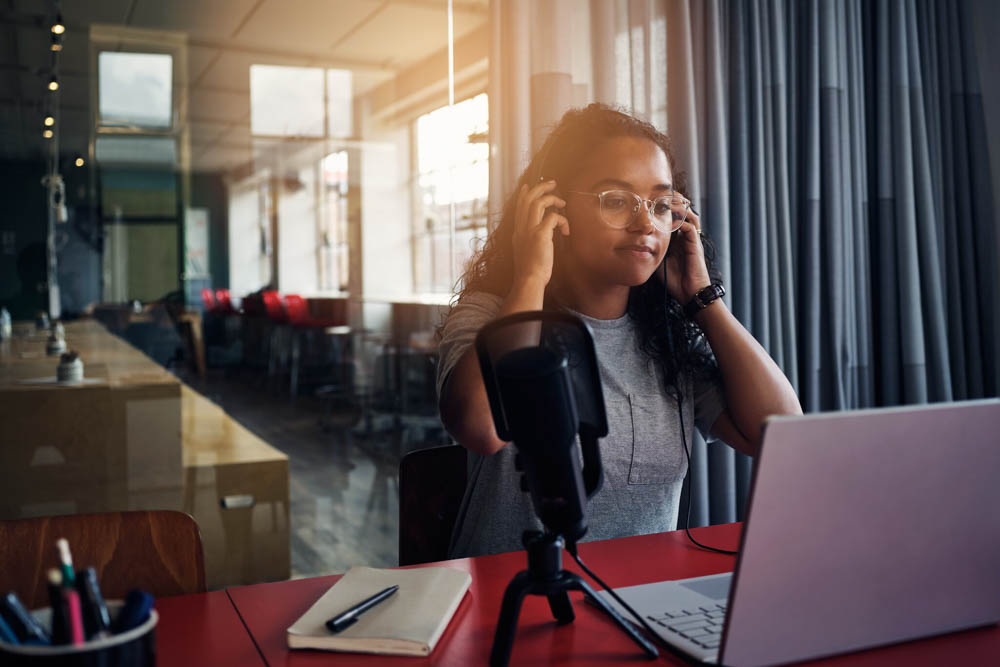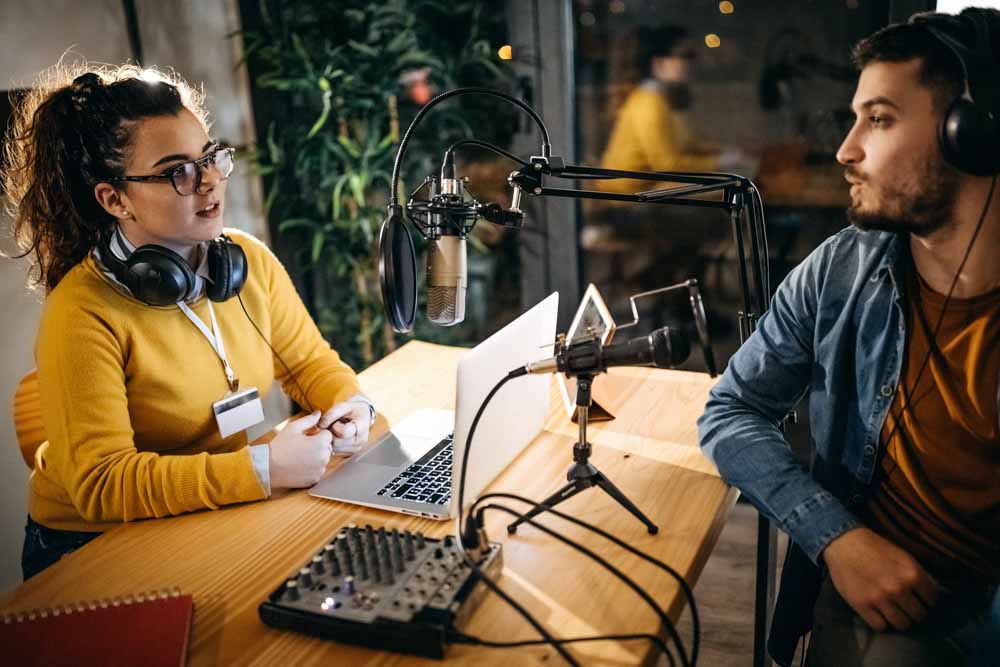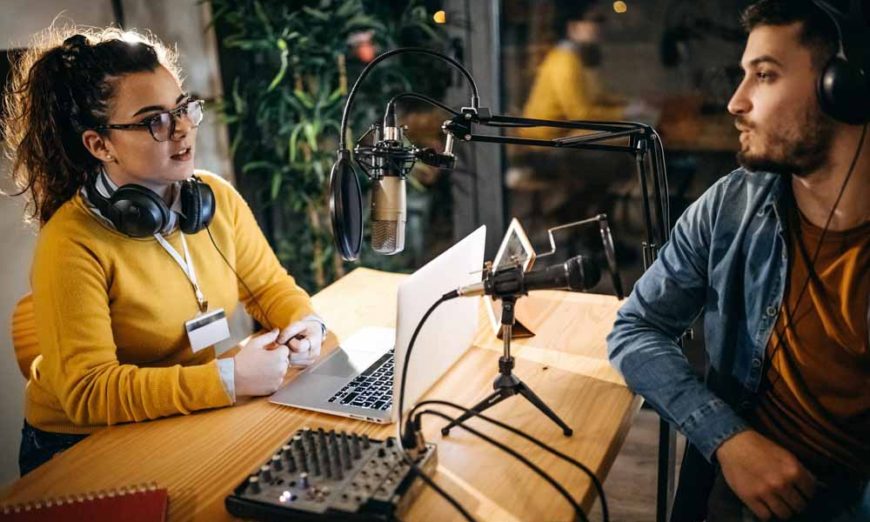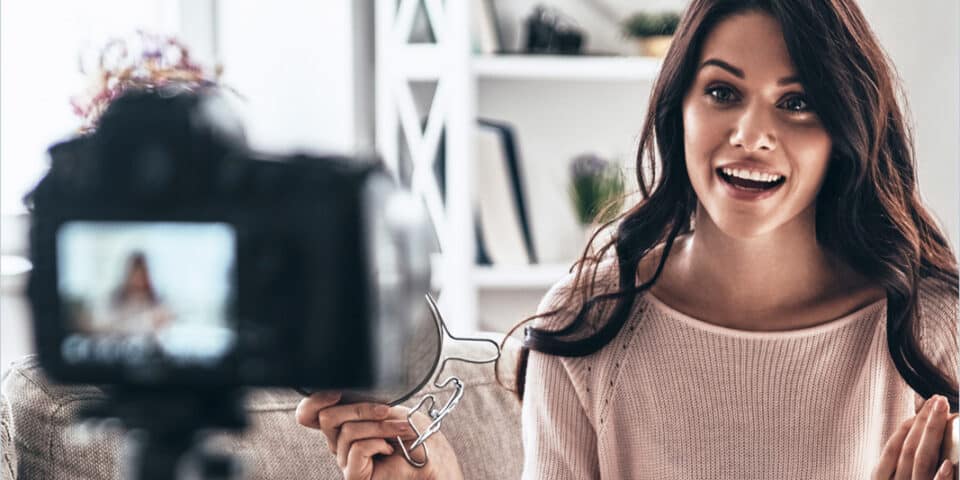If podcasting is on your list of New Year’s Resolutions for 2020, then we’ve got some good news for you. According to The Canadian Podcast Listener 2019, nearly 11 million Canadians over the age of 18 have listened to a podcast in the past year, and while the amount of podcast content is expanding, it is not being produced at the same rate as it’s being consumed. Podcast listeners are eager for content, and the next great podcast could be yours!
So, let’s get back to that podcast you’ve been thinking about starting. You’ve got a great concept with some episode ideas mapped out, and you’re ready to start thinking about audio equipment. Before you get to gear, there’s a couple of things you need to consider:

Format first
First things first, you need to think about which format you’ll be using and how it may affect the quantity and the quality of the gear you’ll require.
Are you doing a solo podcast where it’s just you sharing your experiences or advice throughout the episode? Then your set-up could be as simple as a microphone plugged into your phone or computer and some headphones.
Perhaps your podcast will be interview-style, with the potential for one or more guests. In that case, you’ll need multiple microphones and headphones, and a mixer with multiple inputs – one for each guest plus extras for any music or effects you may want to add in.
Are your guests going to be recording their audio right alongside you? Or, will they be remote or even in multiple different locations?
Keep these considerations top of mind when you start to research your gear. This will help you to put together the most effective gear set-up possible for your podcast.
Location, location, location
The next thing you’ll want to consider before you buy your gear is location, location, and yes, location.
Are you recording your podcast in the same physical location? Or will you be travelling to different locations to interview different guests?
Equipment can be heavy, so if you are going to be carrying your gear from location to location, you’ll want to make sure you are maximizing portability and on-site adaptability. Can a particular tool serve more than one purpose? By contrast, if you are going to be recording in the same location, then you may have different needs as you can create a more effective stationary, studio-type setup.
Once again, be sure to think through these different scenarios so you can equip yourself with gear that makes the most sense for the podcast you’re producing.

At long last, the gear!
Like with so many things, choosing your podcast setup can be as simple or as not-so-simple as you make it. Remember, there are the podcasters who record out of their closet using nothing, but a microphone plugged into their computer or phone, and there are the storytellers doing podcast theatre who work with voice actors and integrate music, effects and environmental sounds.
Read on to find out why you may need (or want) to invest in some additional gear to enhance the production value or even avoid some headaches down the road.
Microphones – Lavalier vs. USB vs. XLR
There’s a reason why people always say “testing, testing, 1,2,3” into a microphone when they first pick it up: sound quality is often what can make or break any kind of production. From Youtube videos to webisodes to TV and film, frequency, pitch and volume are critical, and podcasts are no different.
If you’re just starting out, you’ll need to consider if a lavalier, USB or XLR microphone makes the most sense for your podcast.
Lavalier microphones are compact and extremely portable options for the “on-the-go” podcaster that can plug right into your smartphone. Adapters can be used to plug two microphones in for interviews as well.
A USB microphone is a great “plug and play” option that allows you to plug into your existing devices and start recording high-quality audio very easily. If you’re recording a solo podcast, this microphone option is easy-to-use without sacrificing audio quality.
XLR microphones are the go-to for more complex podcasts involving multiple people. Because they typically don’t plug directly into consumer devices, you’ll need to invest in an audio interface with multiple inputs, like a recorder or mixer, which requires more gear right off the bat, and a bit more know-how and configuration. But, if you’re looking for greater flexibility overall, and think your podcast may evolve to include multiple people recording at the same time, then making this investment up front could pay off in the long run.

Audio interfaces – Digital recorders vs. Mixers
The next gear consideration would be an audio interface to help incorporate multiple audio sources like microphones, music, and ambient noise into your podcast. There are many options available, depending on what you’re trying to capture – and how you’re trying to capture it.
Digital recorders are a generally affordable and portable option for capturing high-quality audio, suitable for when you’re on the go and don’t want to be tied down by your computer.
- Tascam DR-05X – this recorder has no XLR capabilities, but an external mic can be connected via the headphone line-in jack (3.5 mm)
- Zoom H4N Pro – this recorder has four channel recording capability via XLR and headphone inputs
Mixers, on the other hand, offer greater multi-channel control and better reliability than your computer, but can require a bit more familiarity with audio equipment setup. But, if your podcast has multiple hosts or a frequent panel of guests recording from the same location, a mixer will allow you to balance out the voices, like the loud talkers, or your more soft-spoken guests.
So, hopefully you’ll consider these questions and the related podcast gear essentials as you begin your podcast journey in 2020.
Are you thinking about starting a podcast? What kinds of information are you looking for? Have any specific questions about a particular piece (or category) of gear? Leave us a comment below about what kinds of articles you would find useful.






